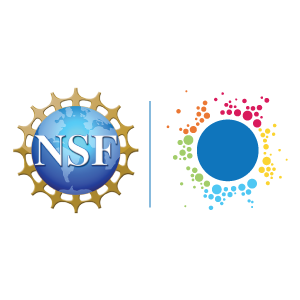In the webinar, Strengthening Capacity to Implement Culturally Responsive Practices, members of the NSF INCLUDES National Network explored the intersectionality of social, economic, and environmental dynamics, and discussed culturally responsive practices effective for broadening participation in STEM in both urban and rural settings in environments with limited access to resources.
This Network Spotlight highlights one of the presenters, Timberley Roane, of the Building a Network for Education and Employment in Environmental Stewardship of Indigenous Lands (ESIL) project, based at the University of Colorado Denver. The ESIL network provides training for job placement for Indigenous students interested in environmental issues involving tribal and non-tribal entities, and opportunities for Indigenous students to use STEM to contribute to their communities by combining a passion for protecting natural resources with a desire to work with communities and different schools of thought.
During the webinar, Timberley discussed building the ESIL network, and challenges her team faced along the way. Keep reading below to learn more from Timberley about the importance of building a collaborative culture, and the need to keep the student voice at the center of this important work.
Contributed by Timberley Roane
Changing course and redesigning the project
We designed the ESIL program around students participating in a series of courses; a series of skill-based and knowledge-based workshops; and ultimately participating in an internship where they work with one of our partners to gain additional skill sets. The ESIL network, a group of federal, state, tribal, and university partners which support and administer the ESIL program, aims to work together to design and deploy this unique educational program by giving students an opportunity to train for employment as tribal liaisons in the environmental field. In addition to the one-on-one mentoring of students, the network thought the courses and training opportunities would be enough to recruit and retain students in the ESIL program. It turns out that, at least so far, these have not necessarily been enough.

What our students have taught us is that the student voice is the missing component from our original design of the network. Up until recently, the ESIL program was designed for students and not with students. What students have taught the network is that their inclusion in ESIL and in higher education is about combining cultures, and ESIL exemplifies many cultures that exist within STEM, environmental sciences, tribes, and working for different agencies, in addition to cultural self-identity. Students have showed the network that there are many cultural influences acting on our students coming from Indigenous values and practices, from STEM disciplines, and even from the culture of higher education. In response, the network has realized that higher education, the context within which these students are learning, can be very rigid in its cultural values and expectations.
We had the assumption that if we give students a forum to express their culture in the context of STEM that would openly happen—a “build it and they will come” sort of approach. What students are telling us is that is not necessarily true. So now, we are engaging deeper by really listening to our students.
Putting student voice at the center of our work
One of the most important things we have learned from our students is that we, and they, are dealing with challenges of the perception of what a scientist or an engineer looks like. Many of our students envision STEM practitioners as white men in lab coats and our students are struggling with this. As a result, we are giving a lot of thought and a lot of discussion time to the practice of equity within higher education and within STEM. We are examining power dynamics, especially where we, not the students, tend to think we have all the answers.

The network has found that we, ourselves, being in STEM disciplines need to reciprocate and immerse ourselves in the cultures of our students. I do not think any of us realized how strict, rigid, and confining the culture within higher education is. What we need to do is to bring STEM and higher education into the context of the students’ cultures. To do this, we changed our perspective; the development of the ESIL program is not a project anymore. It is a mission. We must recognize our own limitations and recognize the power in others. It turns out that our students are our most powerful voices. Our students are just as much of a partner in the ESIL network as our federal, state, tribal and university partners, noting that we are not building a program for our partners or for students. We are building the ESIL program with the students.
***
Thank you to Timberley Roane for sharing some of the challenges of ESIL and ways they are working to address those challenges. Learn more about ESIL’s work on their website.
Missed the conversation and want to know more? You can join in by clicking here.
Explore resources shared in the chat by Network members:
- https://stemnext.org/engaging-families/
- Remake Learning Days
- http://www.eie.org/
- Science in the City: culturally relevant STEM Educationby Bryan Brown (Harvard publishing)
- Discussion post on family engagement in the Exploring STEM Pathways Affinity Group.
Contributed by Timberley Roane and Altinay Cortes

